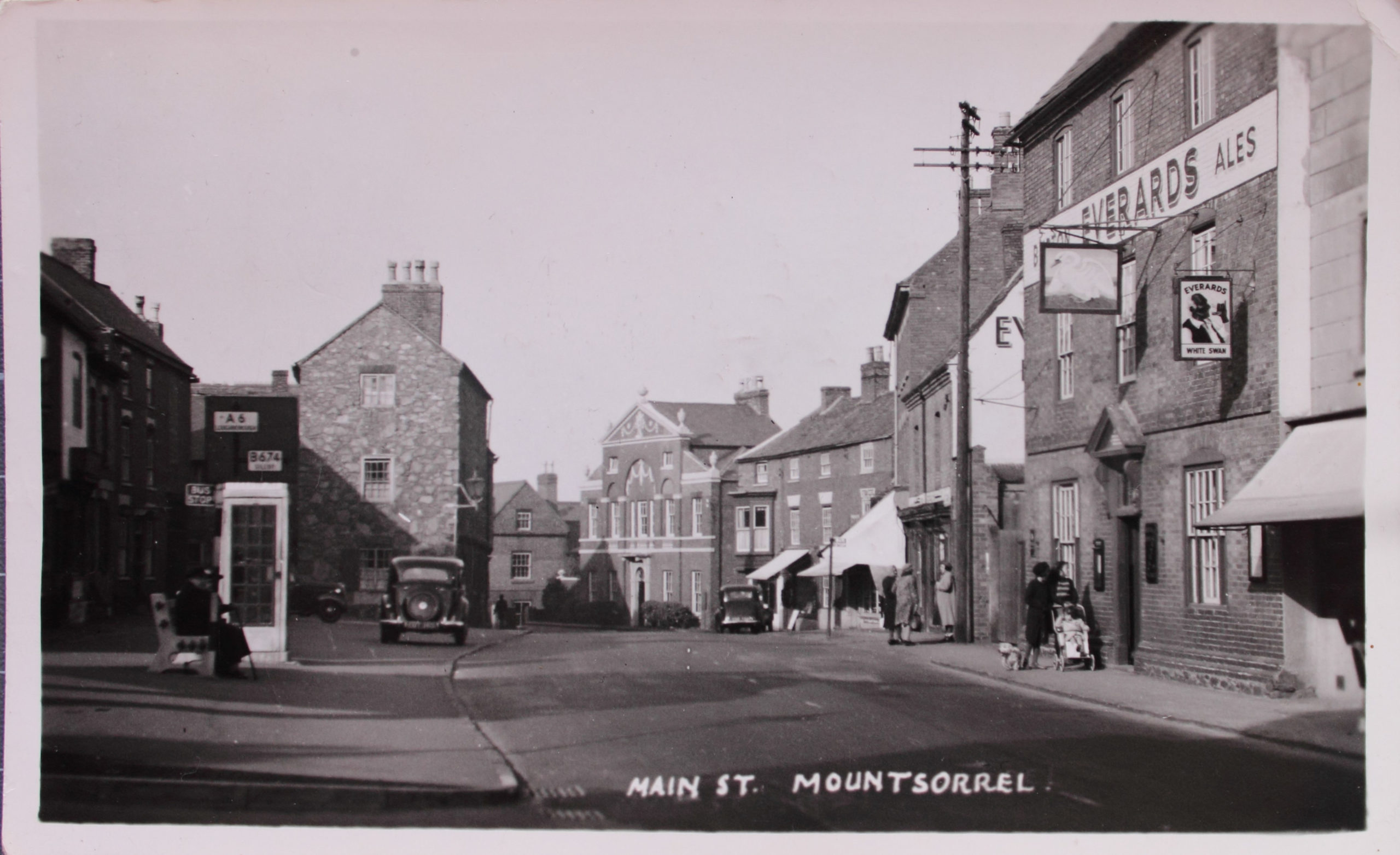The White Swan was a coaching inn once situated opposite the Buttermarket. John Brown was the landlord from the early 1800’s. Prior to that he was landlord of The Harrow on the other side of the road. In Pigot’s 1828 trade directory it is recorded that the White Swan was also the post office and that John Brown was the landlord and postmaster.Letters arrived from London and the south at seven in the evening and from Manchester and the north at quarter to eight in the morning. They were dispatched immediately. Coaches to all parts of the country passed through Mountsorrel almost every hour.
John Brown’s brother Benjamin, who had fought at Waterloo, joined him for a while after he came out of the army in 1821, before he became a village constable. John Brown moved to the King William IV on Leicester Road around 1835 and his brother Thomas took over at the White Swan.
Thomas died at the White Swan in 1838 and the next landlord was Edward Hickling, followed by Joseph Atherley. By 1849 George Bampton had taken over the White Swan and his son, also George Bampton, was still there in 1901. As well as being landlords father and son, between them, were at various times also farmers, insurance agents, grocers, rate collectors, agents for Burton Ales and excise officers.
They were followed by Samual Moore in 1908, John Hipwell in 1912, Thomas Johnson 1915 to 1925 and Arthur Cook in 1928.

In this painting, attributed to John Fernely or his daughter Sarah, we can see the White Swan and what looks like the landlord, in his white apron, standing outside his pub. The landlord in 1842 was Mr Hickling.
Market Place 1842



Let no one be charmed by the name of Mountsorrel, for close on a mile along the road runs an abject townlet of the out of elbows down at heel variety with row upon row of mean cottages. Still stands the Black Swan, although it does little but stand being forlorn and forgotten. The White Swan a contemporary with its black brother is more fortunate and appears still to thrive. This is modern Mountsorrel but you can still see vestiges of the Mountsorrel from a hundred to three hundred years ago when the town depended for its existence on the road. Mountsorrel is precisely as described above, but still it is a charming subject for a sketch.
Standing on the cobblestoned footwalk by the side of the White Swan you look across to the granite crag, to a group of old houses and the singular temple like market cross.
So wrote Charles Harper in his book, The Manchester and Glasgow Road published in 1907

During the 1930’s, 40’s and early 1950’s the White Swan had a darts team. In 1938 its rivals in Mountsorrel were the following eleven other teams: Stag & Pheasant, Railway Inn, King William, Duke of York, Anchor Inn, Nag’s Head, bull & Mouth, Constitutional Club, Working Men’s Club, Dog & Gun and the Prince of Wales
In February 1950 the license of the White Swan was transferred to The Lindens in Halstead Road. The Parish Council and the local residents objected but in March 1950 the Loughborough magistrates granted an application for a public-house, and the White Swan closed down.
” I used to live in the old White Swan when it was no longer a pub.We moved around 1956 when I was eight. we had a lot of out buildings and I think eight acres of land that used to flood, my father use to keep 150 pigs and horses. People used to hold there noses walking by our house. Sometimes the pigs escaped on to the main road and ran away I’d jump on a horse bare back and go round ’em up, must have looked hilarious; the butcher across the road the bike shop owner next door, the local barber and the local bobby all chasing squealing pigs.” John Roberts

Around 1963 the building was bought by a firm which, according to a Mr Lawrence Vendybuck, a director of that firm living at 175 Leicester Road, had spent money on renovations and intended to turn it into a country club. This never happened and the building fell into disrepair
Councillor Harold Newman declared the White Swan was a menace to public safety and that three cattle trucks were packed in the yard making the appearance very unsightly.



In 1963 a villager complained at a Mountsorrel parish meeting about the condition of the Old White Swan public house and was told that the property is on the of ancient buildings list and cannot be demolished until the final list is released be the Ministry.
After it was demolished the site lay empty and derelict for many years until 1987, when houses were built on the site
A door hinge from the White Swan

